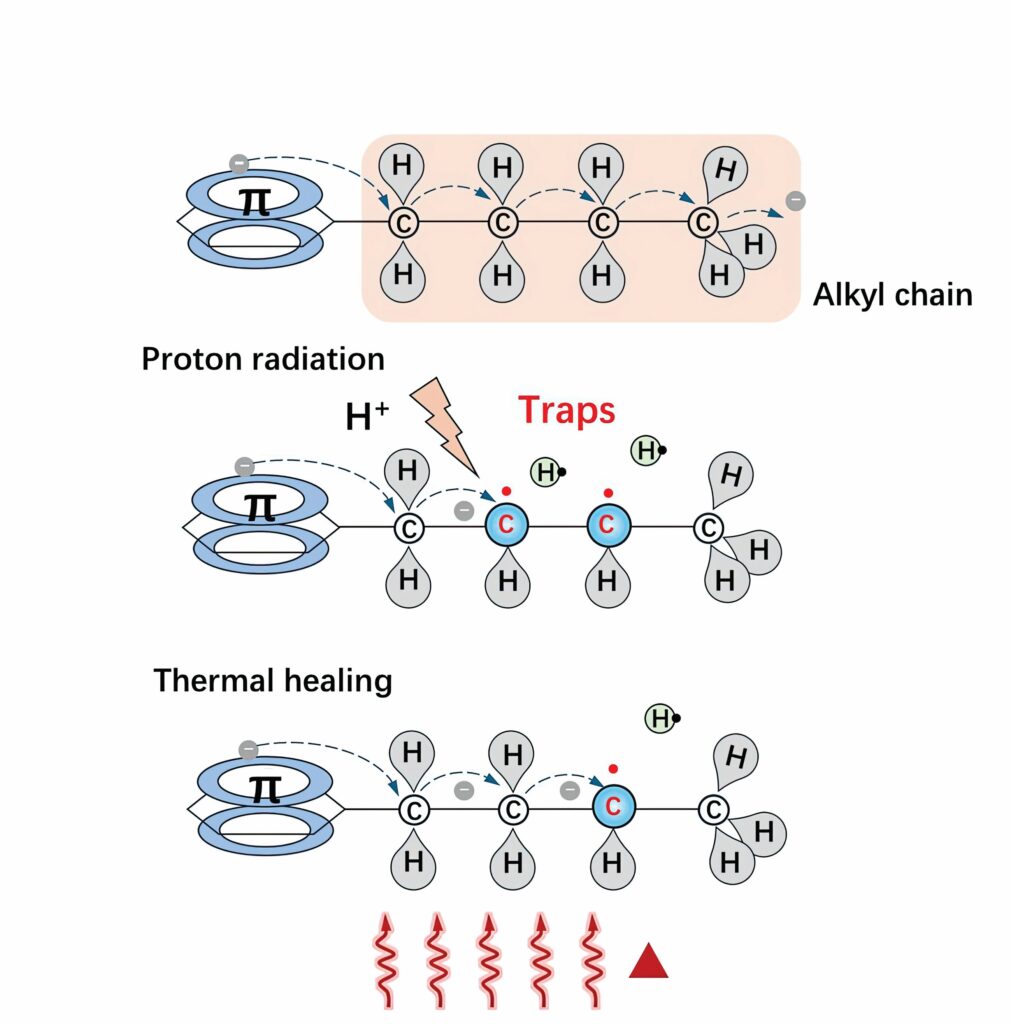Organic photovoltaic solar cell works in space

(Image courtesy of University of Michigan)
Researchers in the US have developed a flexible, organic, photovoltaic (OPV) solar cell that functions well in space, writes Nick Flaherty.
Space missions often decide on gallium arsenide for its high efficiency and resistance to damage from protons, but it is expensive, heavy and inflexible. In contrast, organic solar cells can be flexible and are much lighter.
“Silicon semiconductors aren’t stable in space because of proton irradiation coming from the sun,” said Yongxi Li, associate research scientist in electrical and computer engineering at the University of Michigan. “We tested organic photovoltaics with protons because they are considered the most damaging particles in space for electronic materials.”
The research shows organic solar cells made with small molecules don’t seem to have trouble with protons, showing no damage after three years of radiation. In contrast, those made with long-chain polymers lost half their efficiency.
“We found protons cleave some of the side chains and that leaves an electron trap that degrades solar-cell performance,” said Stephen Forrest, professor of engineering at the University of Michigan.
These traps grab onto electrons freed by light hitting the cell, stopping them flowing to the electrodes harvesting the electricity.
“You can heal this by thermal annealing or heating the solar cell, but we might find ways to fill the traps with other atoms, eliminating this problem,” said Forrest.
The OPVs have the potential to achieve a high specific power of 40 W/g and they can be grown using vacuum thermal evaporation (VPE) rather than a solution-based process. This VPE allows the cells to be resistant to degradation by 30 keV proton radiation, in contrast to polymer-based OPVs, which suffer a 50% efficiency loss under similar conditions.
UPCOMING EVENTS























